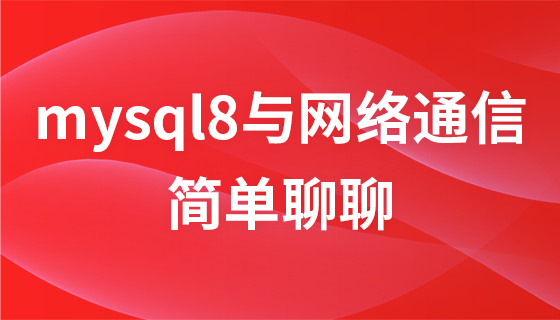了解实时数据的 ETL 过程:提取、转换、加载和可视化
来源:dev.to
时间:2024-12-02 15:52:10 187浏览 收藏
来到golang学习网的大家,相信都是编程学习爱好者,希望在这里学习文章相关编程知识。下面本篇文章就来带大家聊聊《了解实时数据的 ETL 过程:提取、转换、加载和可视化》,介绍一下,希望对大家的知识积累有所帮助,助力实战开发!

etl(提取、转换、加载)过程是有效管理数据的基础,特别是在需要基于实时数据快速决策的应用程序中。在本文中,我们将使用涉及币安 api 的实时加密货币交易的实际示例来探索 etl 流程。提供的 python 代码说明了如何提取交易数据、将其转换为可用格式、将其加载到 sqlite 数据库中,以及通过实时绘图可视化数据。
示例 etl 项目: https://github.com/vcse59/featureengineering/tree/main/real-time-cryptocurrency-price-tracker
1。提取物
etl 过程的第一步是提取,其中涉及从各种来源收集数据。在这种情况下,数据是通过与 binance testnet api 的 websocket 连接提取的。此连接允许实时传输 btc/usdt 交易。
代码中提取的实现方式如下:
with websockets.connect(url) as ws:
response = await ws.recv()
trade_data = json.loads(response)
收到的每条消息都包含必要的交易数据,包括价格、数量和时间戳,格式为 json。
2。变形
提取数据后,它会经历转换过程。此步骤清理并结构化数据以使其更有用。在我们的示例中,转换包括将时间戳从毫秒转换为可读格式,并将数据组织为适当的类型以供进一步处理。
price = float(trade_data['p']) quantity = float(trade_data['q']) timestamp = int(trade_data['t']) trade_time = datetime.fromtimestamp(timestamp / 1000.0)
这确保了价格和数量存储为浮点数,并且时间戳被转换为日期时间对象,以便于操作和分析。
3。加载
最后一步是加载,将转换后的数据存储在目标数据库中。在我们的代码中,sqlite 数据库作为交易数据的存储介质。
加载过程由以下函数管理:
def save_trade_to_db(price, quantity, timestamp):
conn = sqlite3.connect('trades.db')
cursor = conn.cursor()
# create a table if it doesn't exist
cursor.execute('''
create table if not exists trades (
id integer primary key autoincrement,
price real,
quantity real,
timestamp text
)
''')
# insert the trade data
cursor.execute('''
insert into trades (price, quantity, timestamp)
values (?, ?, ?)
''', (price, quantity, trade_time))
conn.commit()
conn.close()
此函数连接到 sqlite 数据库,如果不存在则创建一个表,并插入交易数据。
4。可视化
除了存储数据之外,将数据可视化以便更好地理解和决策也很重要。提供的代码包含一个实时绘制交易的函数:
def plot_trades():
if len(trades) > 0:
timestamps, prices, quantities = zip(*trades)
plt.subplot(2, 1, 1)
plt.cla() # Clear the previous plot for real-time updates
plt.plot(timestamps, prices, label='Price', color='blue')
plt.ylabel('Price (USDT)')
plt.legend()
plt.title('Real-Time BTC/USDT Prices')
plt.xticks(rotation=45)
plt.subplot(2, 1, 2)
plt.cla() # Clear the previous plot for real-time updates
plt.plot(timestamps, quantities, label='Quantity', color='orange')
plt.ylabel('Quantity')
plt.xlabel('Time')
plt.legend()
plt.xticks(rotation=45)
plt.tight_layout() # Adjust layout for better spacing
plt.pause(0.1) # Pause to update the plot
此函数生成两个子图:一个用于价格,另一个用于数量。它使用matplotlib库动态可视化数据,让用户实时观察市场趋势。
结论
此示例重点介绍了 etl 过程,演示了如何从 websocket api 中提取数据、进行转换以进行分析、加载到数据库中以及如何进行可视化以获取即时反馈。该框架对于构建需要基于实时数据做出明智决策的应用程序至关重要,例如交易平台和市场分析工具。
到这里,我们也就讲完了《了解实时数据的 ETL 过程:提取、转换、加载和可视化》的内容了。个人认为,基础知识的学习和巩固,是为了更好的将其运用到项目中,欢迎关注golang学习网公众号,带你了解更多关于的知识点!
-
501 收藏
-
501 收藏
-
501 收藏
-
501 收藏
-
501 收藏
-
173 收藏
-
268 收藏
-
128 收藏
-
303 收藏
-
293 收藏
-
374 收藏
-
355 收藏
-
449 收藏
-
353 收藏
-
166 收藏
-
132 收藏
-
460 收藏
-

- 前端进阶之JavaScript设计模式
- 设计模式是开发人员在软件开发过程中面临一般问题时的解决方案,代表了最佳的实践。本课程的主打内容包括JS常见设计模式以及具体应用场景,打造一站式知识长龙服务,适合有JS基础的同学学习。
- 立即学习 543次学习
-

- GO语言核心编程课程
- 本课程采用真实案例,全面具体可落地,从理论到实践,一步一步将GO核心编程技术、编程思想、底层实现融会贯通,使学习者贴近时代脉搏,做IT互联网时代的弄潮儿。
- 立即学习 516次学习
-

- 简单聊聊mysql8与网络通信
- 如有问题加微信:Le-studyg;在课程中,我们将首先介绍MySQL8的新特性,包括性能优化、安全增强、新数据类型等,帮助学生快速熟悉MySQL8的最新功能。接着,我们将深入解析MySQL的网络通信机制,包括协议、连接管理、数据传输等,让
- 立即学习 500次学习
-

- JavaScript正则表达式基础与实战
- 在任何一门编程语言中,正则表达式,都是一项重要的知识,它提供了高效的字符串匹配与捕获机制,可以极大的简化程序设计。
- 立即学习 487次学习
-

- 从零制作响应式网站—Grid布局
- 本系列教程将展示从零制作一个假想的网络科技公司官网,分为导航,轮播,关于我们,成功案例,服务流程,团队介绍,数据部分,公司动态,底部信息等内容区块。网站整体采用CSSGrid布局,支持响应式,有流畅过渡和展现动画。
- 立即学习 485次学习
